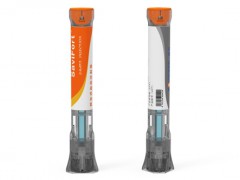據(jù)油價網(wǎng)5月22日報道,油價創(chuàng)歷史新高,夏季開始時美國柴油短缺迫在眉睫,以及歐佩克的態(tài)度可能是世界各國政府官員頭疼的原因。但事實上,這些都是能源行業(yè)深層次問題的表現(xiàn)。
在過去十年左右的時間里,歐洲,以及規(guī)模較小但同樣重要的北美,都把減少對化石燃料的依賴,增加對可再生能源的依賴作為自己的使命。
沙特阿拉伯石油部長今年早些時候警告稱,石油和天然氣投資不足將對消費產(chǎn)生回彈效應(yīng),而他并不是唯一這樣想的人。許多歐佩克官員也發(fā)出了同樣的警告,但顯然無濟于事。畢竟,正是國際能源署去年表示,世界不需要新的石油和天然氣勘探,因為我們將不再需要新的石油或天然氣供應(yīng)。
當然,僅僅幾個月后,國際能源署就改變了論調(diào),呼吁歐佩克增加產(chǎn)量,這表明了能源行業(yè)的一個嚴峻現(xiàn)實:你不可能在幾個月的時間里逆轉(zhuǎn)已經(jīng)持續(xù)多年的進程。
發(fā)現(xiàn)率低
新發(fā)現(xiàn)石油和天然氣的平均速率在某種程度上相當于太陽能電池板的平均轉(zhuǎn)換率——這是一個很少被提及的話題——遠低于30%。
彭博社最近報道稱,殼牌在巴西近海鉆探的三口井已經(jīng)干涸。這家超級石油巨頭為獲得該地區(qū)的開采權(quán)支付了10億美元,花了三年時間進行鉆探,卻空手而歸。埃克森美孚也未能開發(fā)其巴西區(qū)塊的任何重要石油儲備,這讓它損失了16億美元。
這一消息突顯出,即便是在巴西這樣的地方,油氣勘探也存在風(fēng)險。巴西一直被吹捧為油氣行業(yè)的下一個熱點,可能會與圭亞那并立。巴西因其豐富的鹽下帶而吸引了許多大型石油公司,但正如一位當?shù)啬茉搭檰柛嬖V彭博社的那樣,當發(fā)現(xiàn)率接近100%時,真正重大的有效發(fā)現(xiàn)早已收回。
然而,據(jù)彭博社報道,油氣行業(yè)的平均成功發(fā)現(xiàn)率遠低于這個數(shù)字,為24.8%。而且,有待發(fā)現(xiàn)的重大發(fā)現(xiàn)越來越少了。
生產(chǎn)成本上漲
在很大程度上由能源價格飆升推動的更廣泛的通脹趨勢,并未超越能源行業(yè)本身。在美國頁巖地區(qū),生產(chǎn)成本上升了20%左右。大陸資源公司和赫斯公司最近警告稱,它們第二季度的成本將會上升,而且它們遠不是唯一面臨成本上升的公司。
壓裂砂和今年早些時候油井用鋼管等原材料的短缺,是生產(chǎn)成本上漲的一個原因,不僅是在頁巖地區(qū),而且是在油田使用這些原材料的所有地方。勞動力短缺也是美國頁巖地區(qū)面臨的一個特殊問題,這也推高了生產(chǎn)成本。疫情遺留下的供應(yīng)鏈問題也是原因之一。
更大的問題是,正如Argus最近援引油氣行業(yè)高管的話報道的那樣,該行業(yè)也不認為未來幾個月會有任何緩解。當聯(lián)邦政府確實需要更多的石油和天然氣時,生產(chǎn)成本緊縮出現(xiàn)了,這可能是最糟糕的時刻,因為它阻止了鉆井公司進一步增加新鉆井的開支。
網(wǎng)絡(luò)攻擊
過去幾年,隨著網(wǎng)絡(luò)攻擊大幅增加,網(wǎng)絡(luò)安全已成為能源行業(yè)關(guān)注的一個問題。從網(wǎng)絡(luò)安全的角度來看,科洛尼爾管道黑客事件確實幫助對解決網(wǎng)絡(luò)安全問題有所幫助,但似乎沒有什么后續(xù)行動。
挪威風(fēng)險評估和質(zhì)量保證咨詢公司DNV本周進行的一項全新調(diào)查顯示,石油行業(yè)對網(wǎng)絡(luò)威脅相當不安,更糟糕的是,并沒有真正準備好應(yīng)對這些威脅。
根據(jù)這項研究,84%的高管預(yù)計網(wǎng)絡(luò)攻擊將導(dǎo)致能源資產(chǎn)的物理損失,而超過一半54%的高管預(yù)計網(wǎng)絡(luò)攻擊將導(dǎo)致人員傷亡。大約74%的受訪者預(yù)計網(wǎng)絡(luò)攻擊會造成環(huán)境破壞。只有30%的人知道如果他們的公司成為這種攻擊的目標該怎么辦。
季廷偉 摘譯自 油價網(wǎng)
原文如下:
Five Major Challenges Facing The Energy Industry
Record-high prices at the pump, a looming diesel shortage right when the summer season is starting, and an uncooperative OPEC are probably reasons for many headaches among government officials around the world. Yet these are, in fact, manifestations of deeper problems in the energy industry.
Underinvestment In the past decade or so, Europe and, to a lesser but no less significant extent, North America, have made it their mission to reduce their reliance on fossil fuels and increase their reliance on renewable energy.
This has spurred an investor exodus from oil and gas and the emergence of the so-called ESG investing trend. Money for new oil and gas developments has become more difficult to tap as banks join the ESG movement, and companies have had to cut back on spending.
Saudi Arabia's oil minister warned that underinvestment in oil and gas would have a boomerang effect on consumers earlier this year, and he is not the only one. Many OPEC officials have made the same warning but, apparently, to no avail. After all, none other than the International Energy Agency said last year the world does not need new oil and gas exploration because we won't be needing any more new oil or gas supply.
Of course, it was only a few months later that the IEA changed its tune, calling on OPEC to boost production, and it demonstrated one of the harsh realities of the energy industry: you cannot reverse a process that has been going on for years in a matter of months.
Low discovery rates
A topic that doesn't get much talked about, the average rate of new oil and gas discoveries is, in a way, comparable to the average conversion rate of solar panels: it is well below 30 percent.
Bloomberg recently reported that three wells that Shell had drilled offshore Brazil had come up dry. The supermajor had paid $1 billion for drilling rights in the area and had spent three years drilling to come up empty-handed. Exxon had also failed to tap any significant oil reserves in its Brazilian blocks, which cost it $1.6 billion.
The news highlights the risky nature of oil and gas exploration even in places like Brazil, which has been touted as the next hot spot in the industry, probably alongside Guyana. Brazil has become a magnet for supermajors because of its prolific presalt zone, but, as one local energy consultant told Bloomberg, the big discoveries have already been made—back when the discovery rate was close to 100 percent.
The average successful discovery rate for the oil and gas industry is much lower than that, however, at 24.8 percent, according to Bloomberg. And there are fewer and fewer big discoveries to be made.
Production cost inflation
Broader inflation trends, in large part driven by soaring energy costs, have not passed the energy industry itself. In the U.S. shale patch, production costs have risen by some 20 percent.
Two companies recently warned they would be reporting higher costs for their second quarters, Continental Resources and Hess Corp, and they are far from the only ones experiencing these higher costs.
Shortages of raw materials such as frac sand and, earlier this year, steel piping for wells, are one reason for the production cost inflation, not just in the shale patch but everywhere where these raw materials are used in oil fields. A shortage of labor is a special problem for the U.S. shale patch, too, helping to drive production costs higher. Lingering supply chain problems from the pandemic are also in the mix.
The bigger problem is that the industry is not expecting any respite in the coming months, either, as Argus recently reported, citing oil and gas executives. The production cost squeeze comes at a time when the federal government really needs more oil and gas, which is probably the worst possible time as it has discouraged drillers further from spending more on new drilling.
Cyberattacks
Cybersecurity has become a cause for concern in the energy industry in the past few years as cyberattacks have multiplied significantly. The Colonial Pipeline hacking really helped out things in perspective on the cybersecurity front, but little action followed, it seems.
A brand new survey by DNV, the Norwegian risk assessment and quality assurance consultancy, revealed this week that the industry is quite uneasy about cyberthreats and, what's worse, not really prepared to handle them.
According to the study, 84 percent of executives expect cyberattacks will lead to physical damage to energy assets, while more than half—54 percent—expect cyberattacks to result in the loss of human life. Some 74 percent of the respondents expect environmental damage as a result of a cyberattack. And only 30 percent know what to do if their company becomes a target of such an attack.
免責(zé)聲明:本網(wǎng)轉(zhuǎn)載自其它媒體的文章及圖片,目的在于弘揚石化精神,傳遞更多石化信息,宣傳國家石化產(chǎn)業(yè)政策,展示國家石化產(chǎn)業(yè)形象,參與國際石化產(chǎn)業(yè)輿論競爭,提高國際石化產(chǎn)業(yè)話語權(quán),并不代表本網(wǎng)贊同其觀點和對其真實性負責(zé),在此我們謹向原作者和原媒體致以崇高敬意。如果您認為本站文章及圖片侵犯了您的版權(quán),請與我們聯(lián)系,我們將第一時間刪除。







